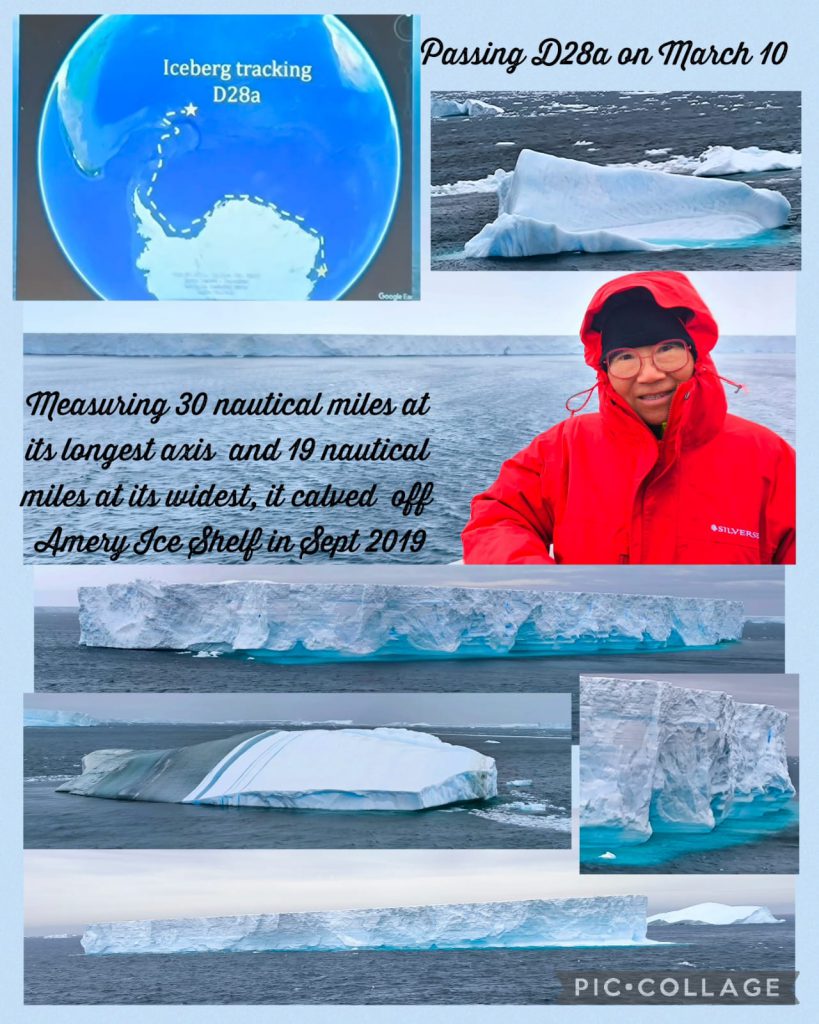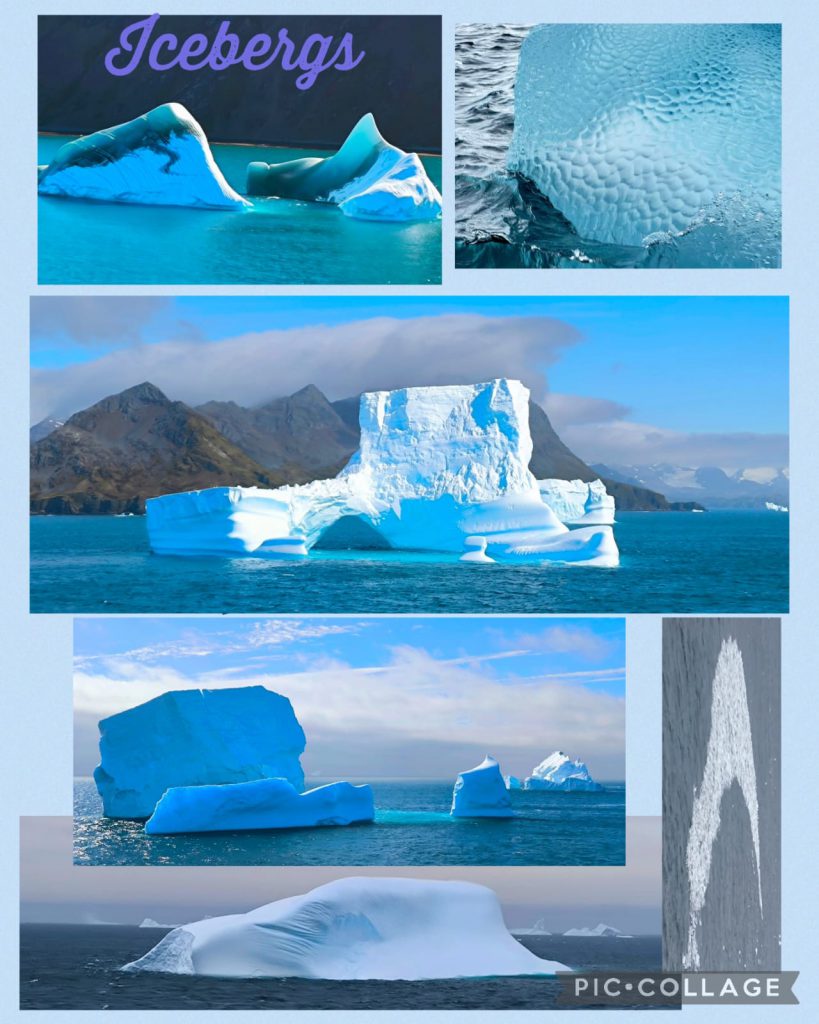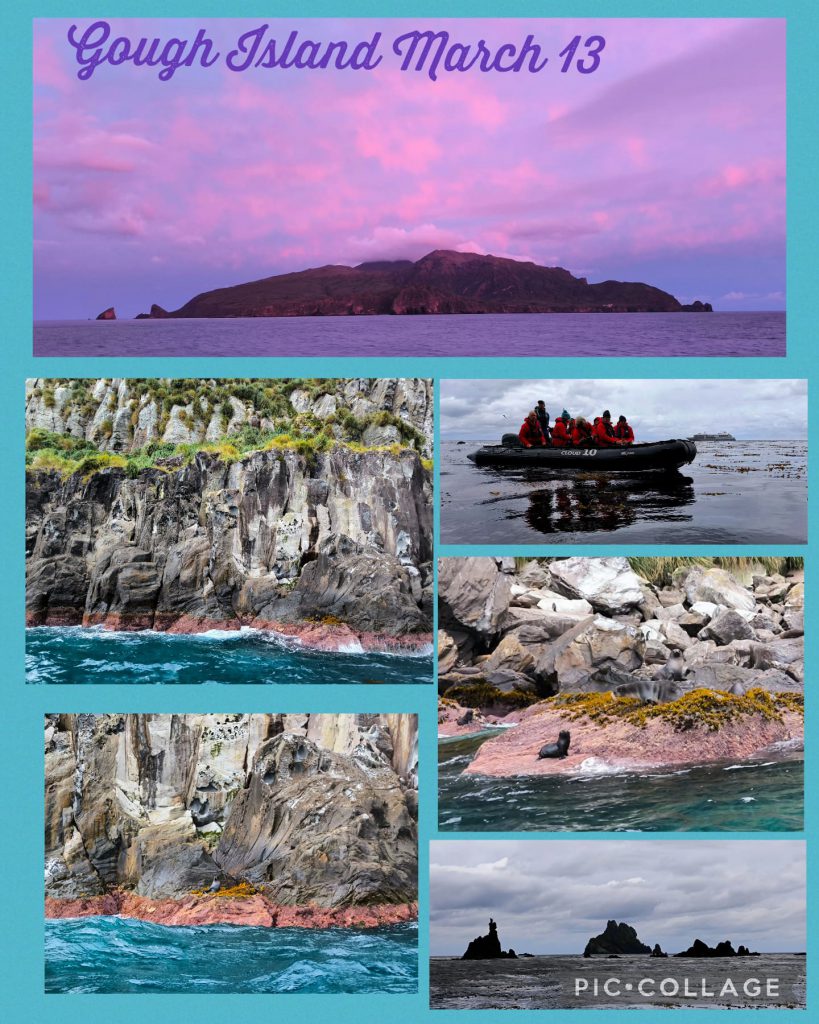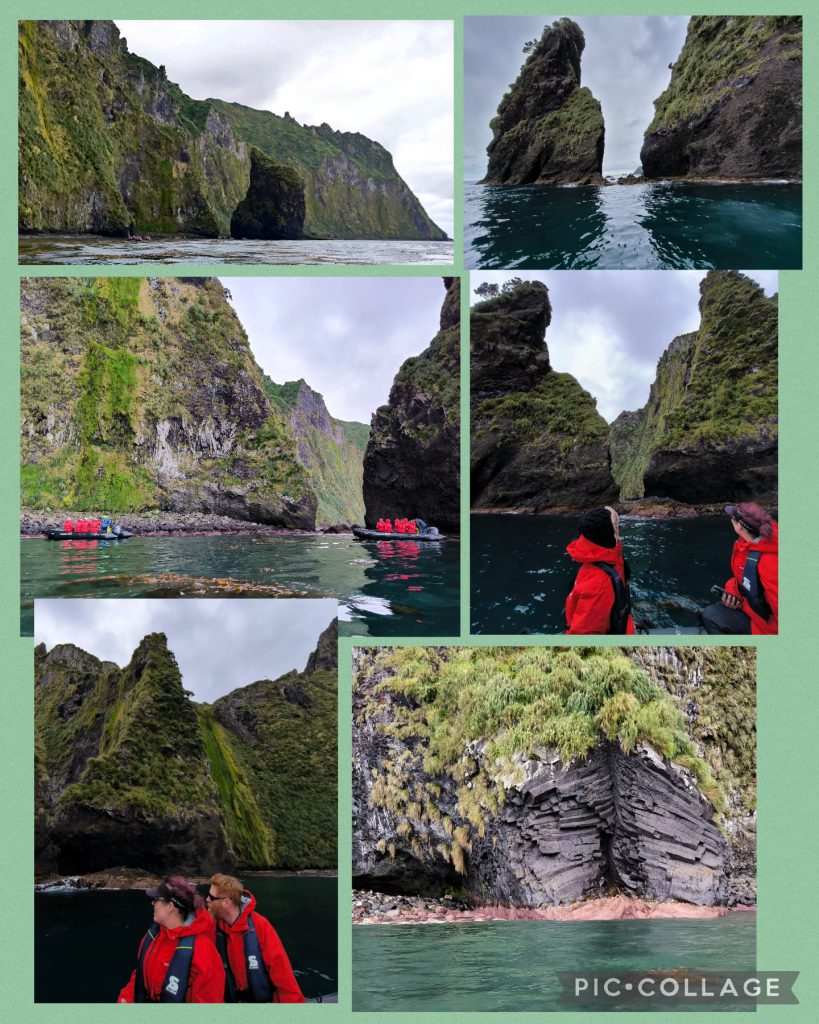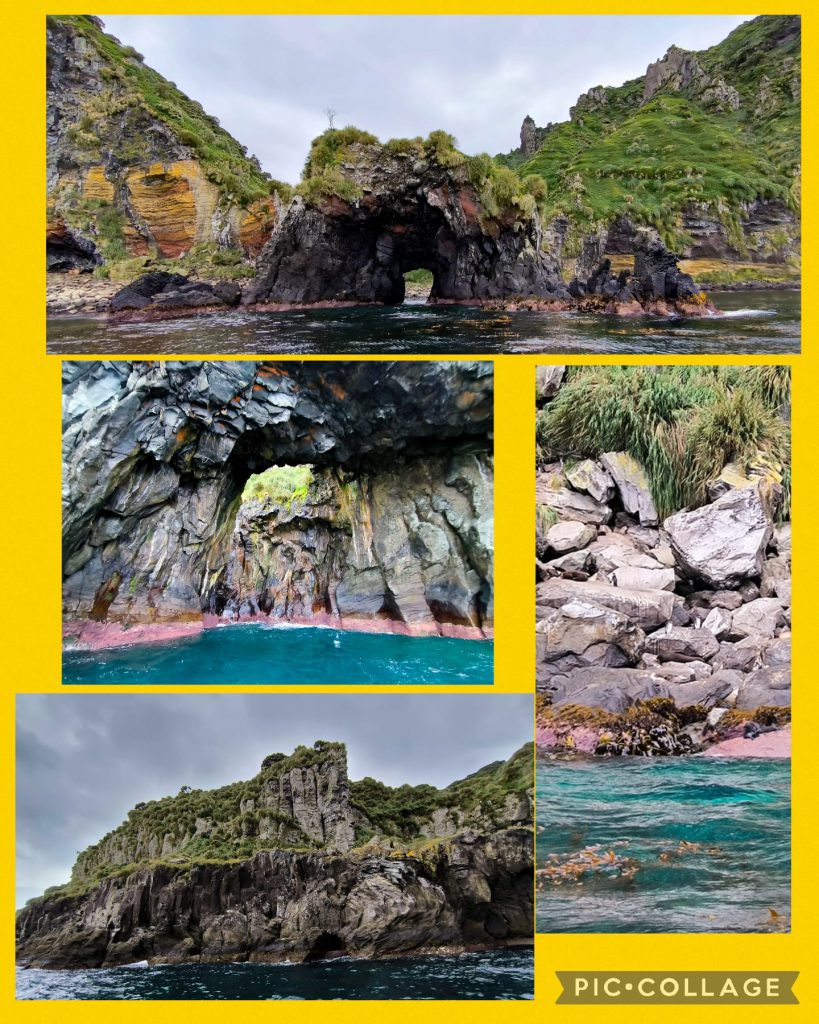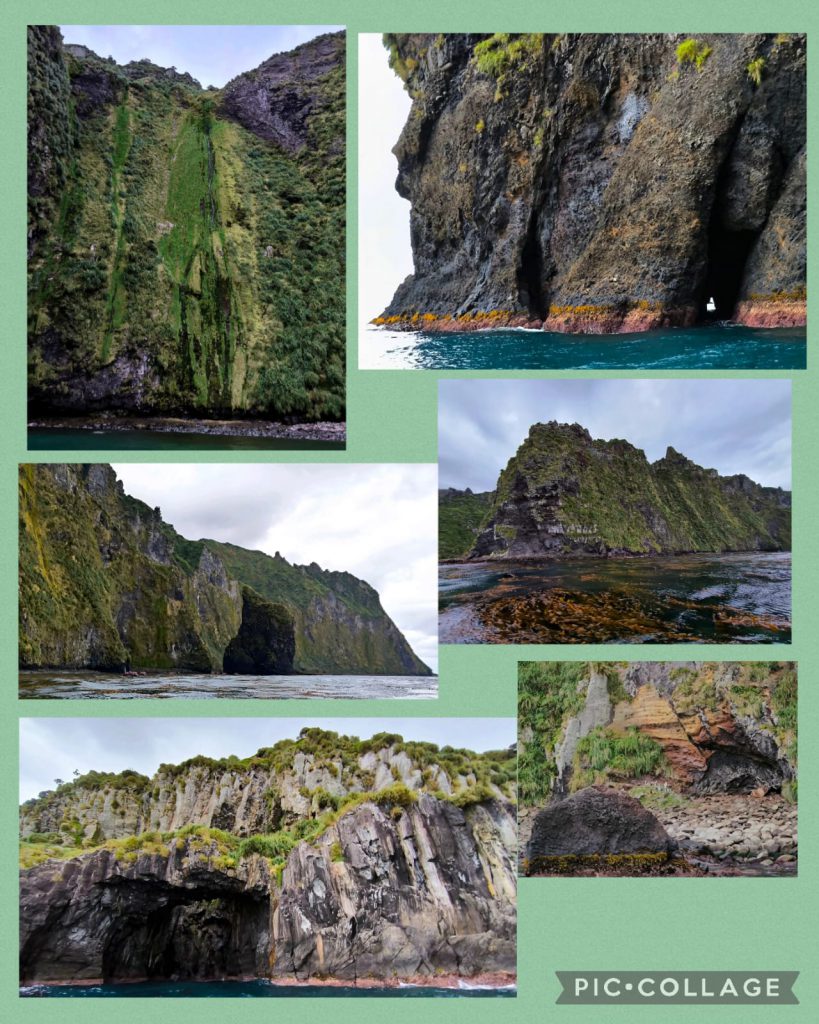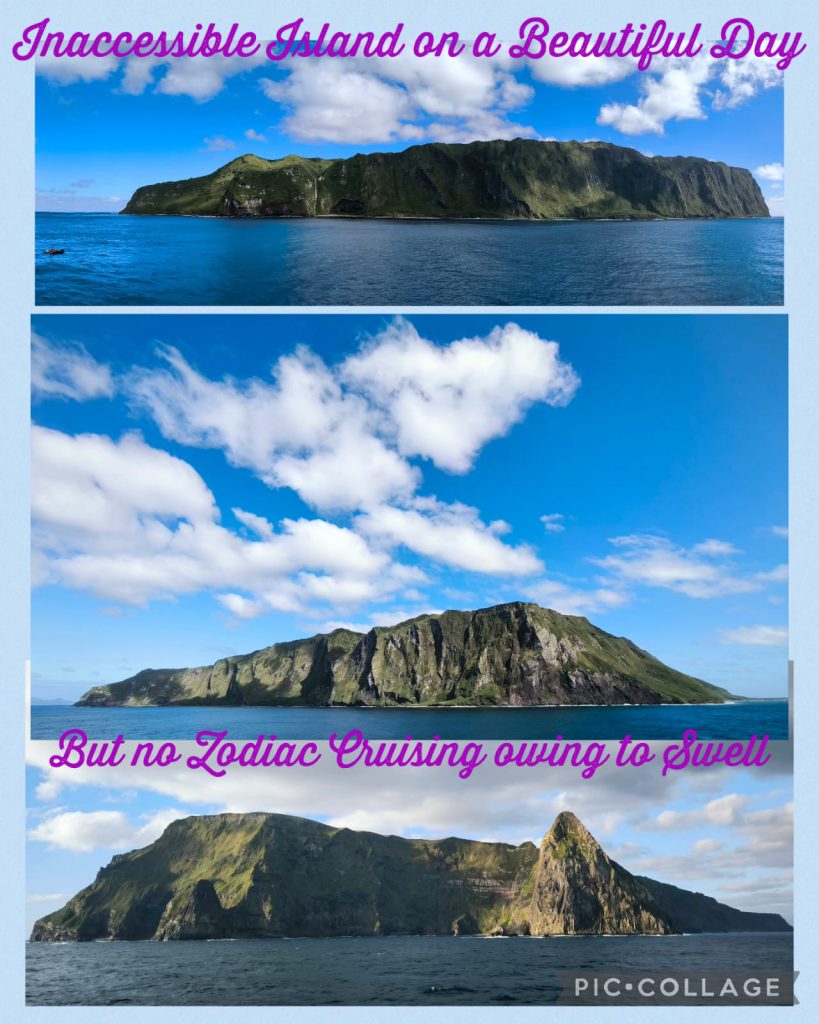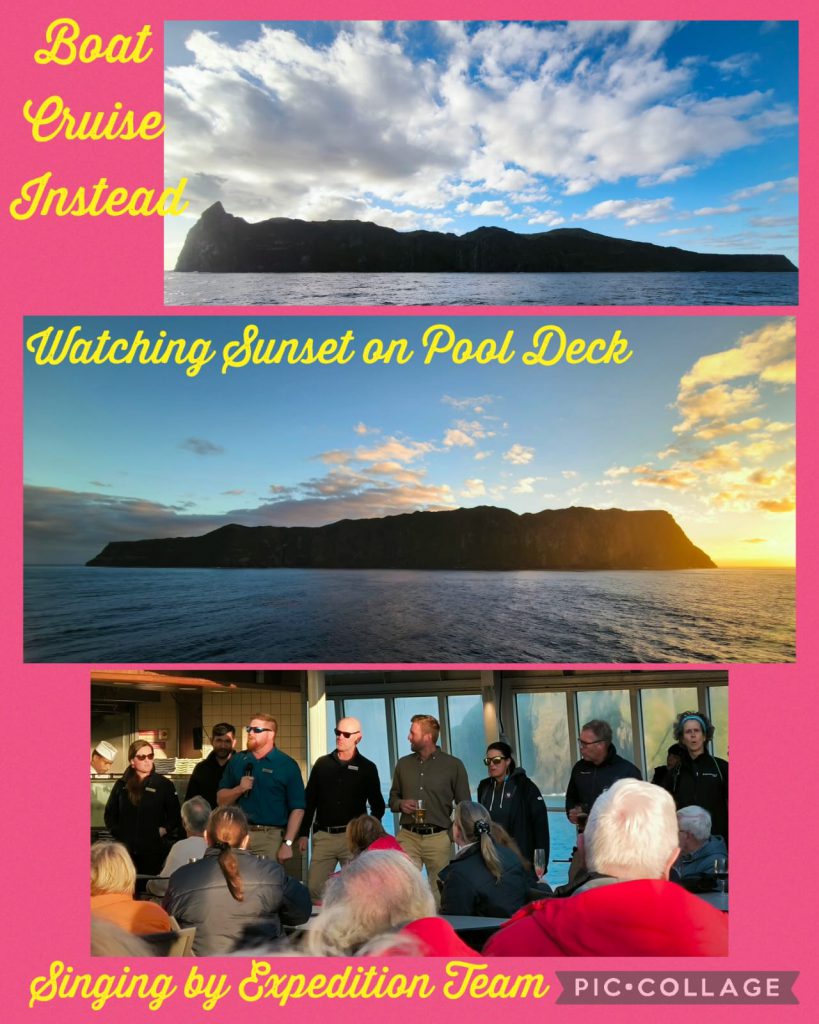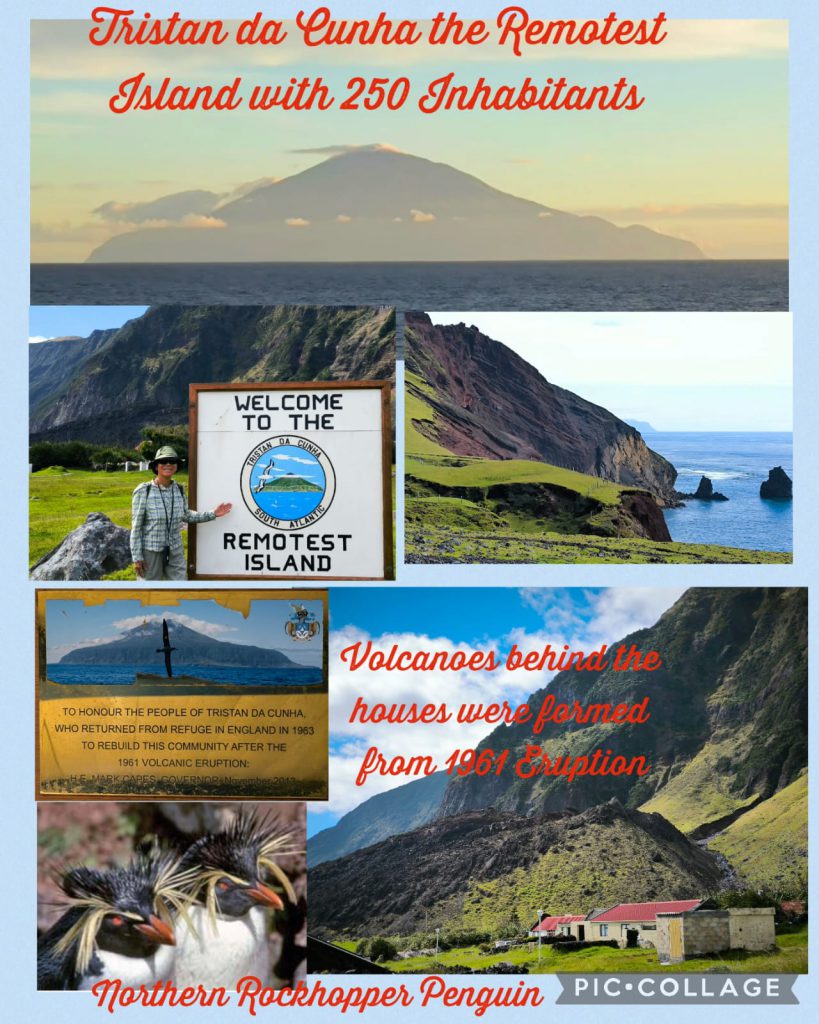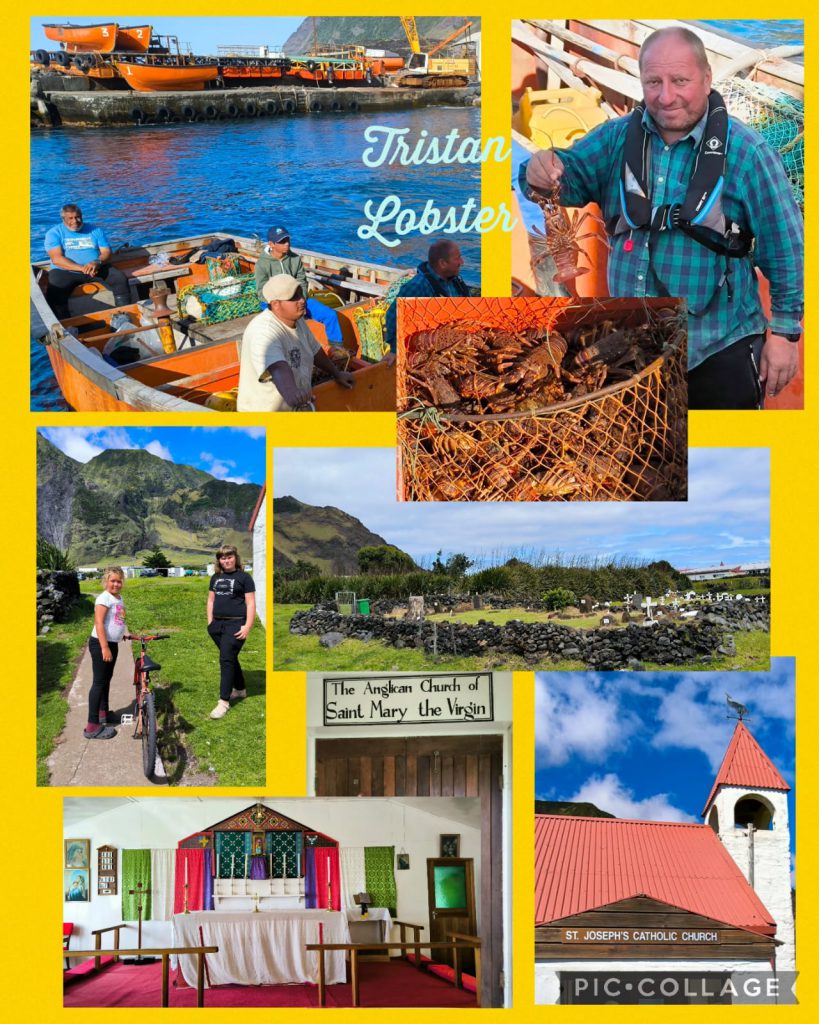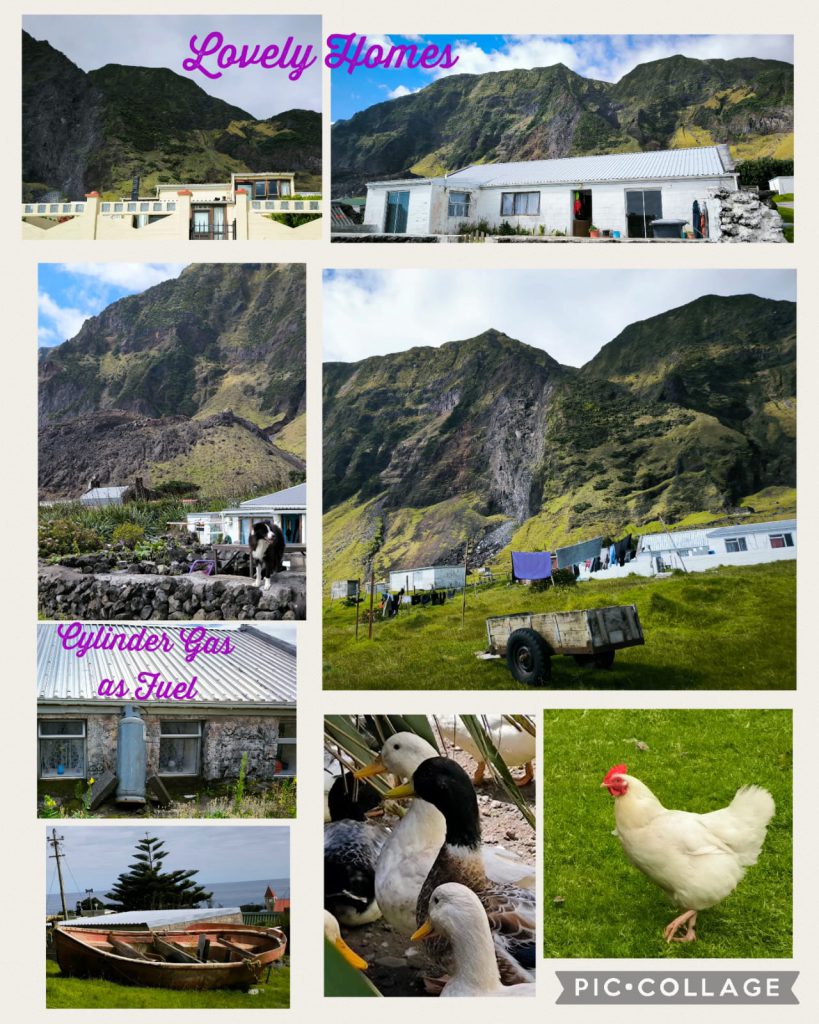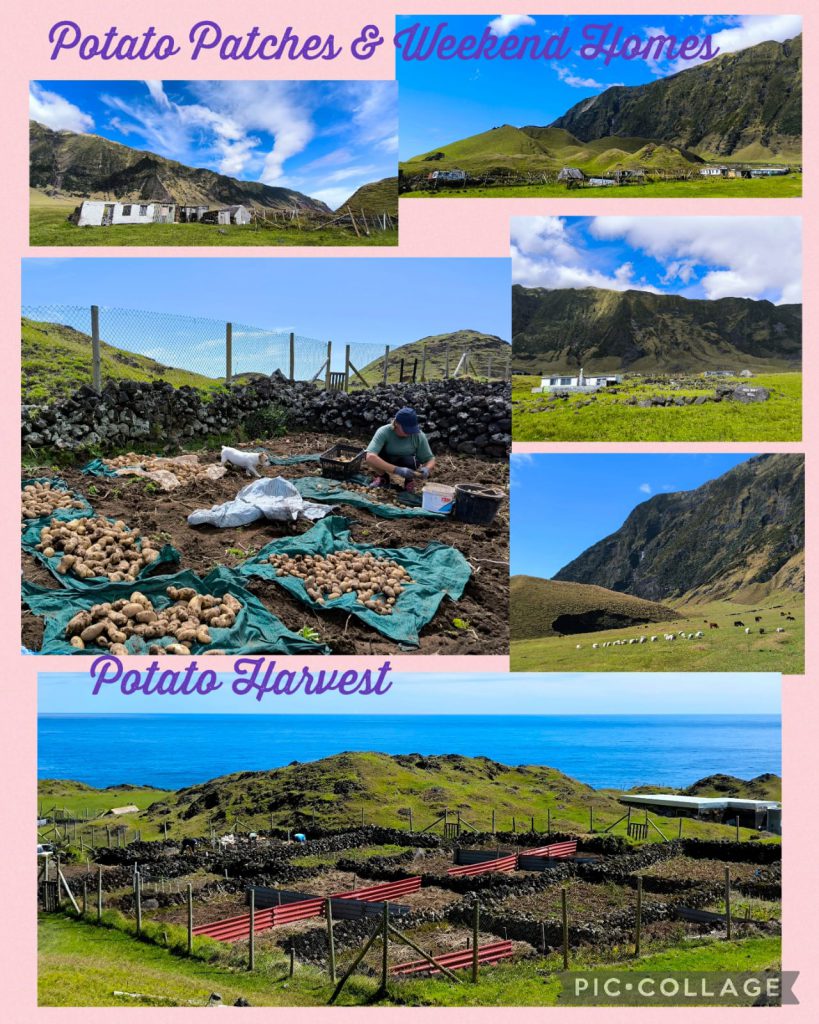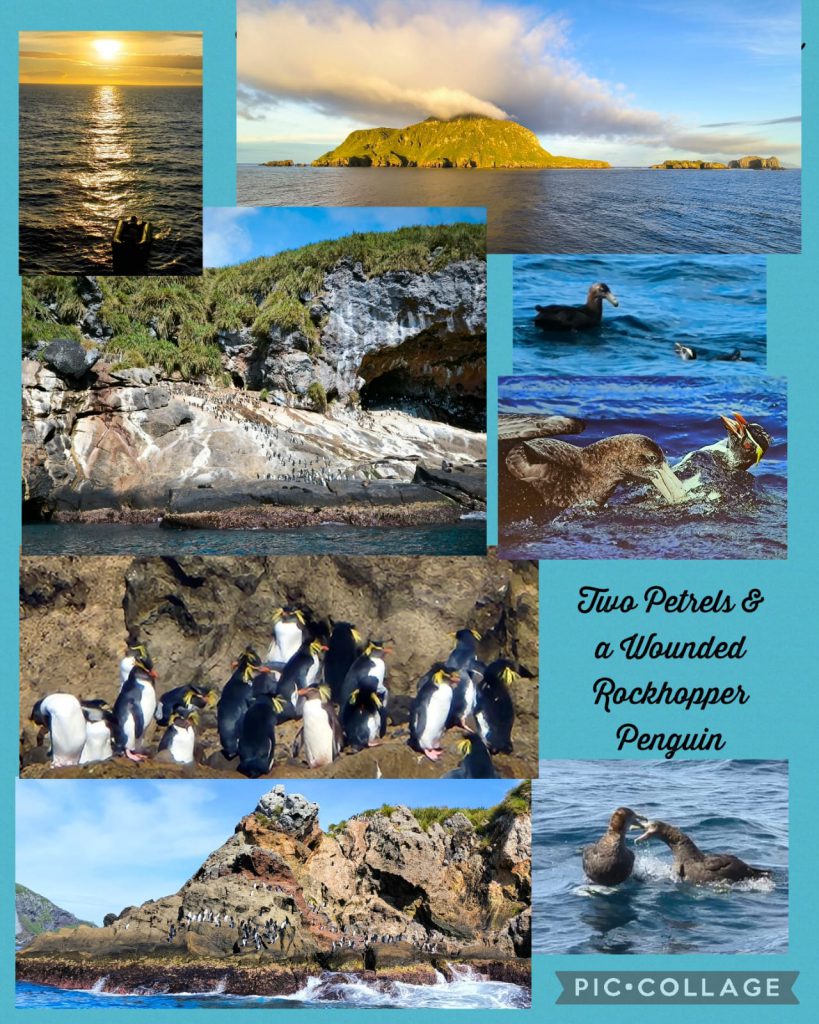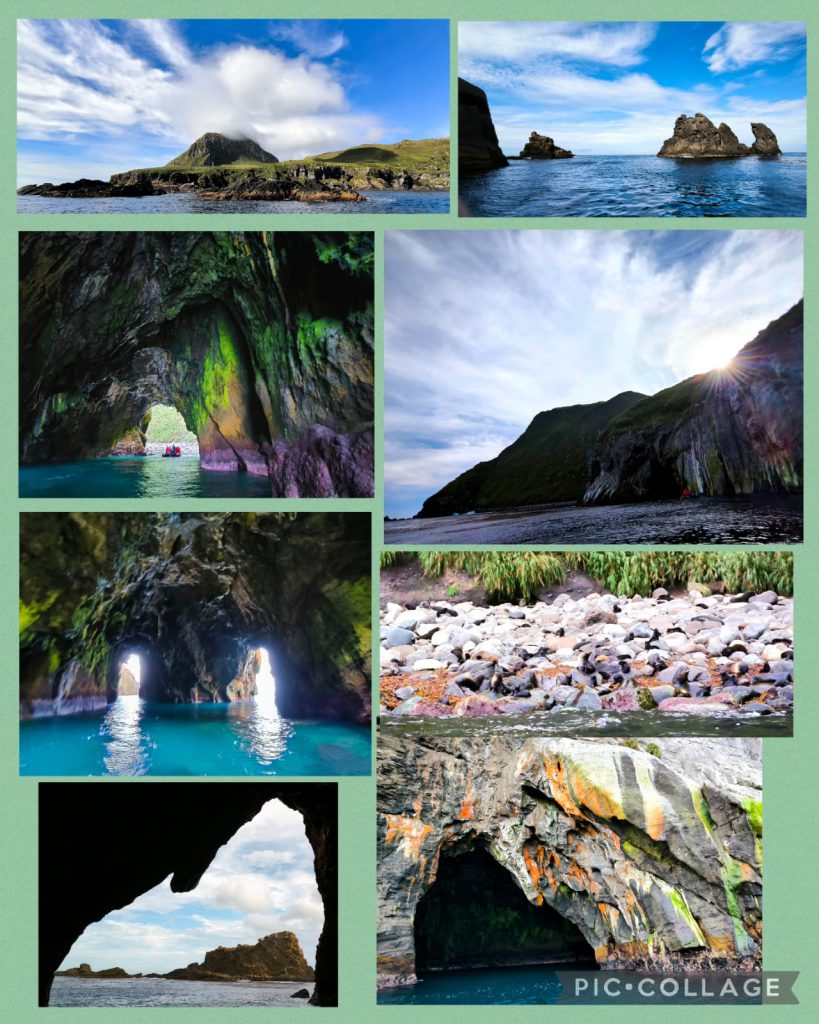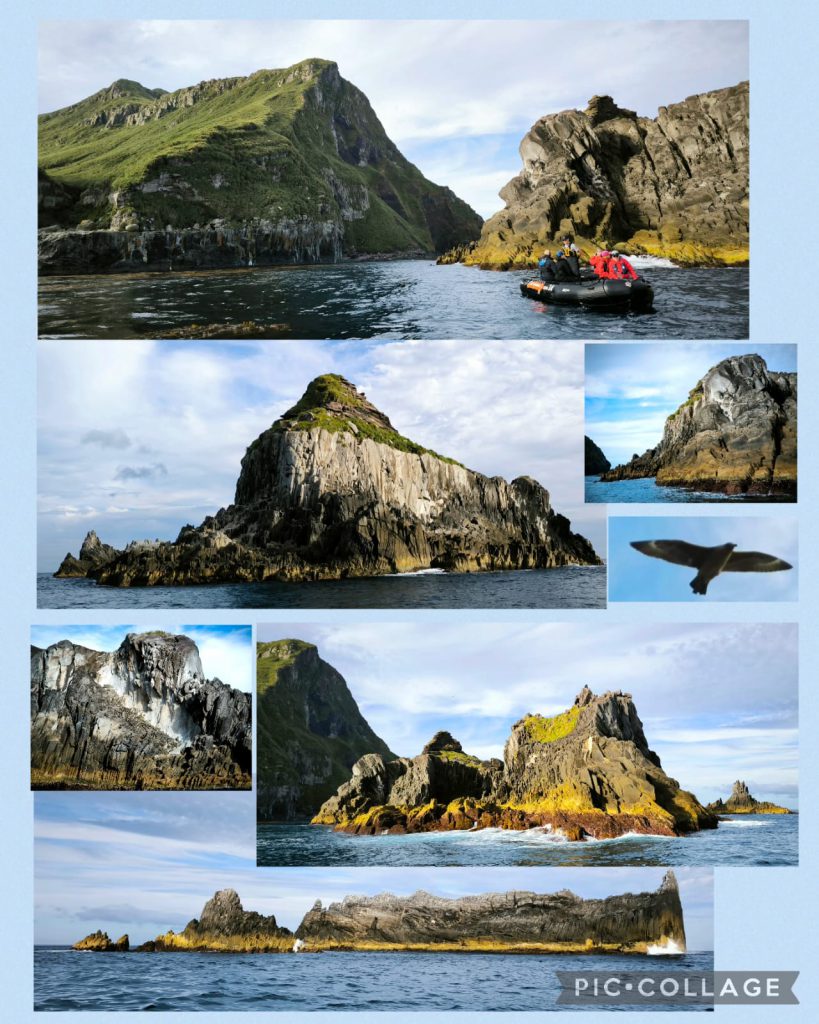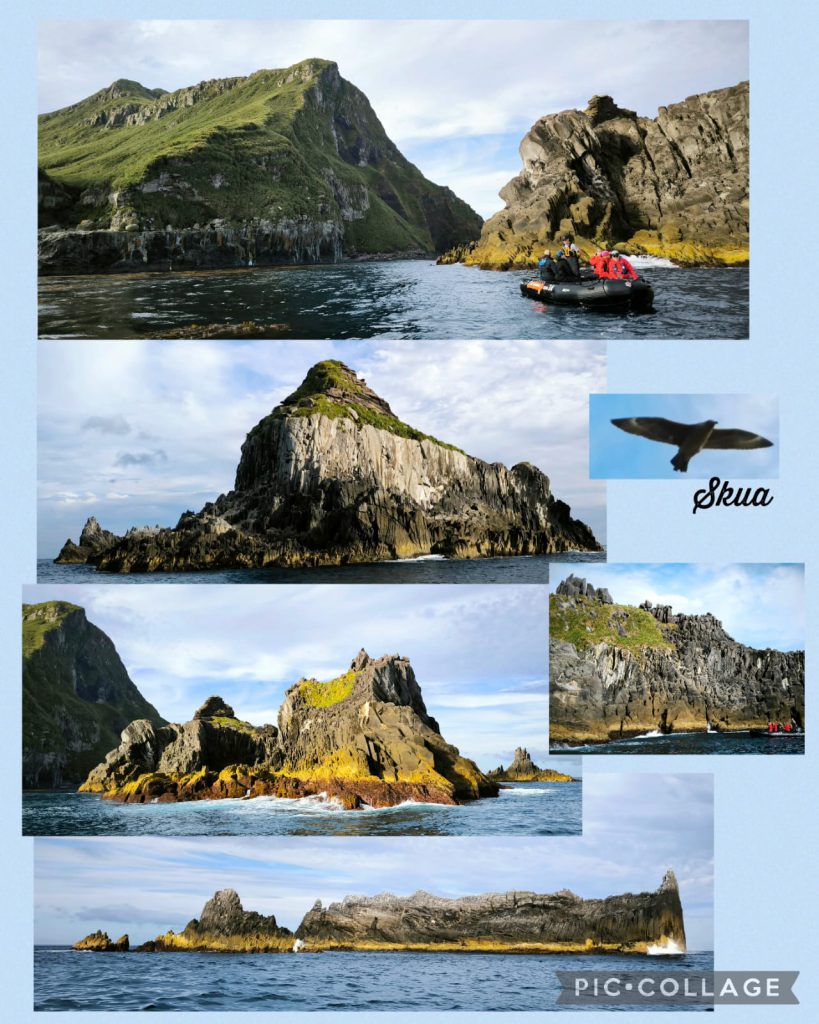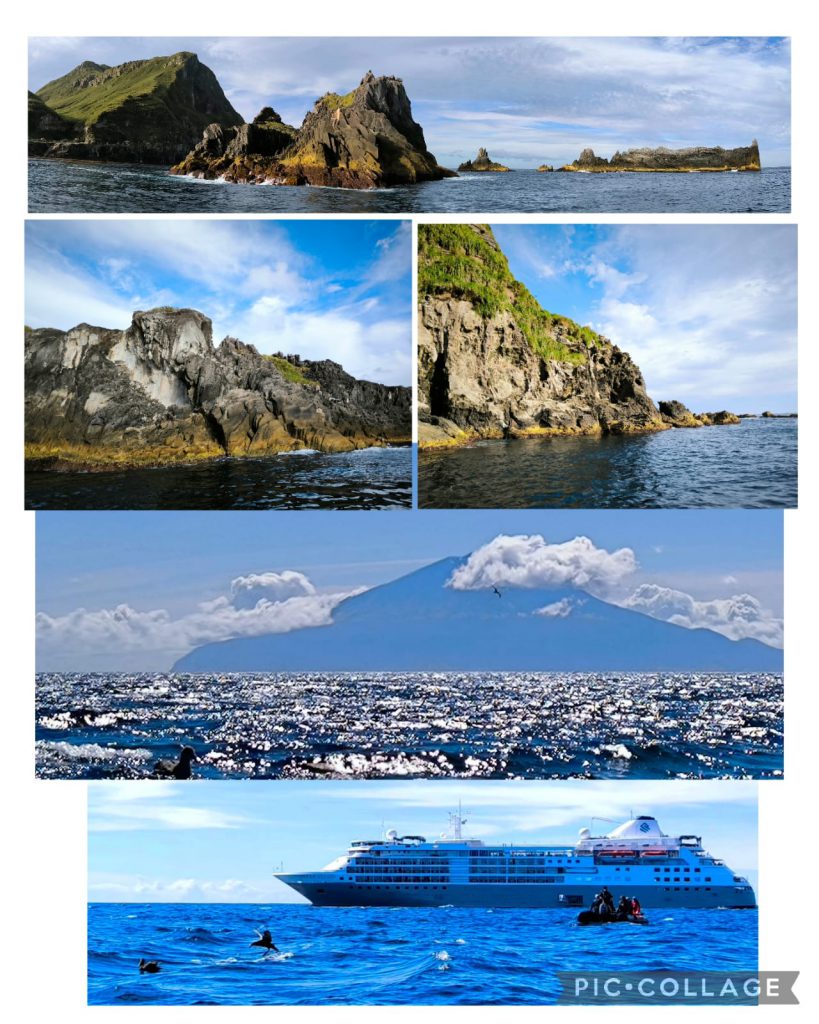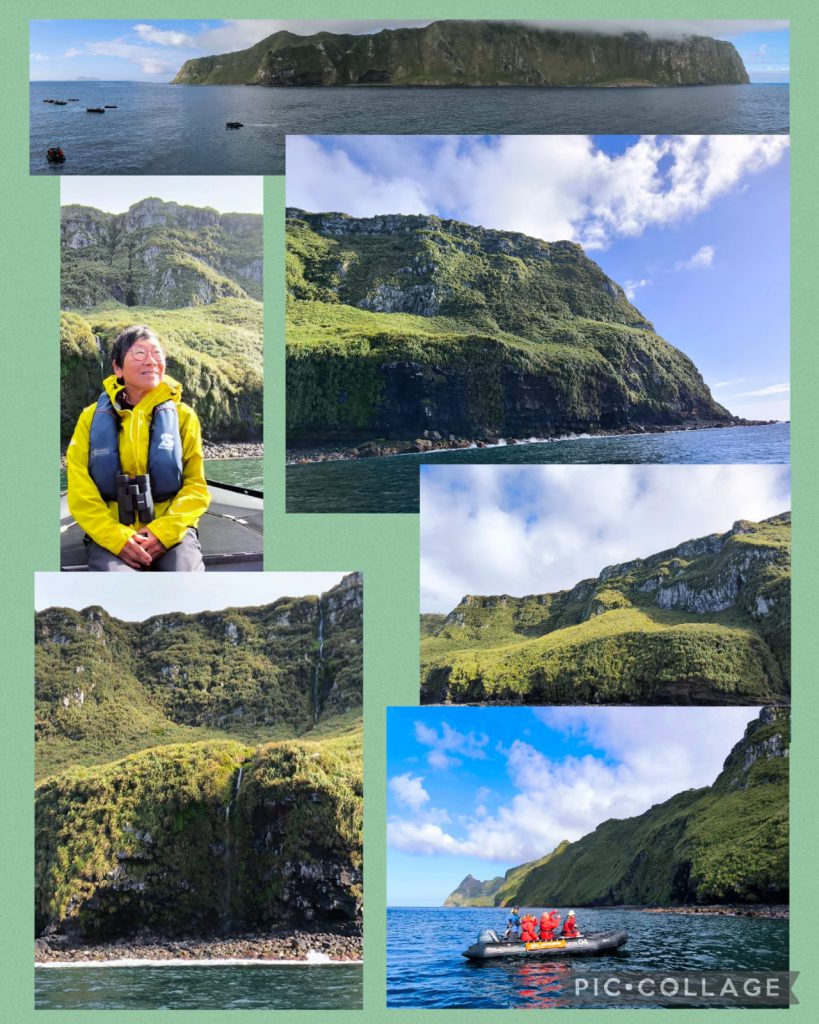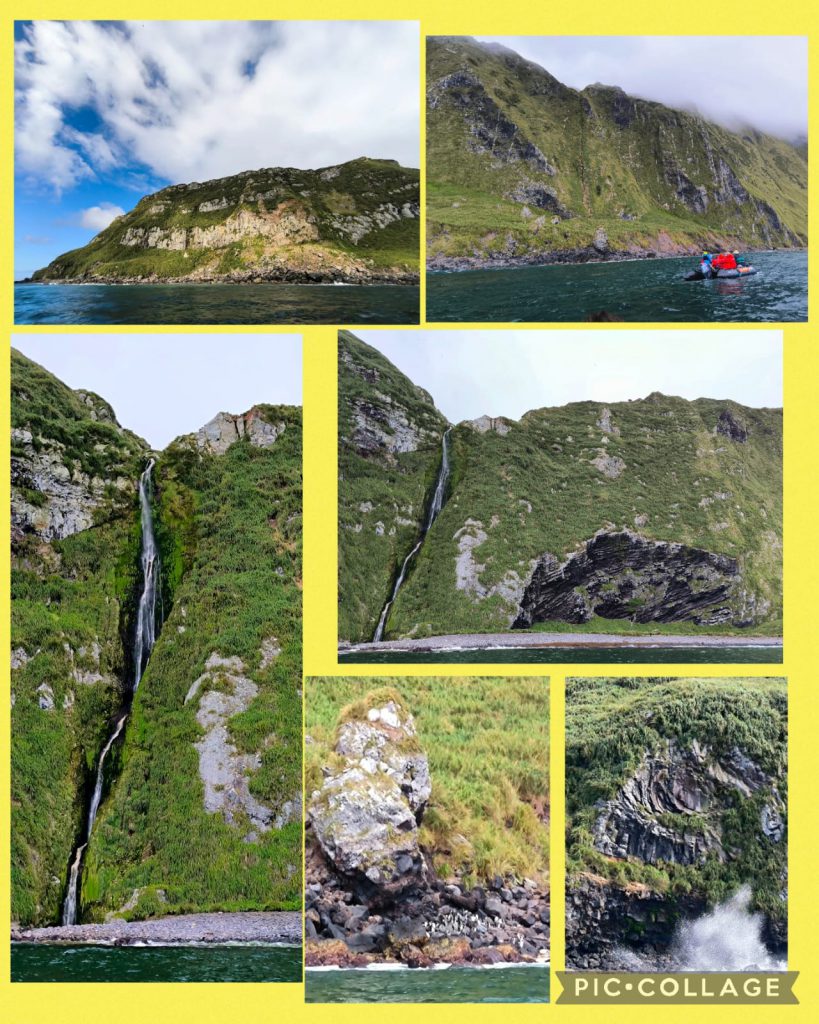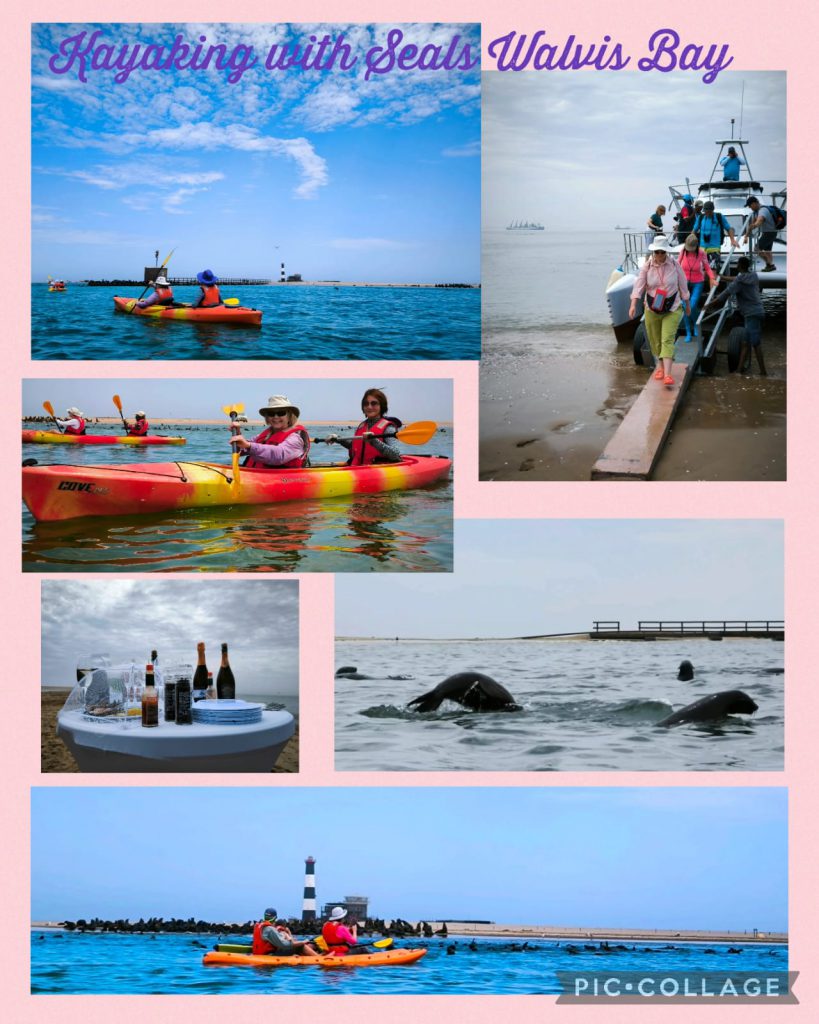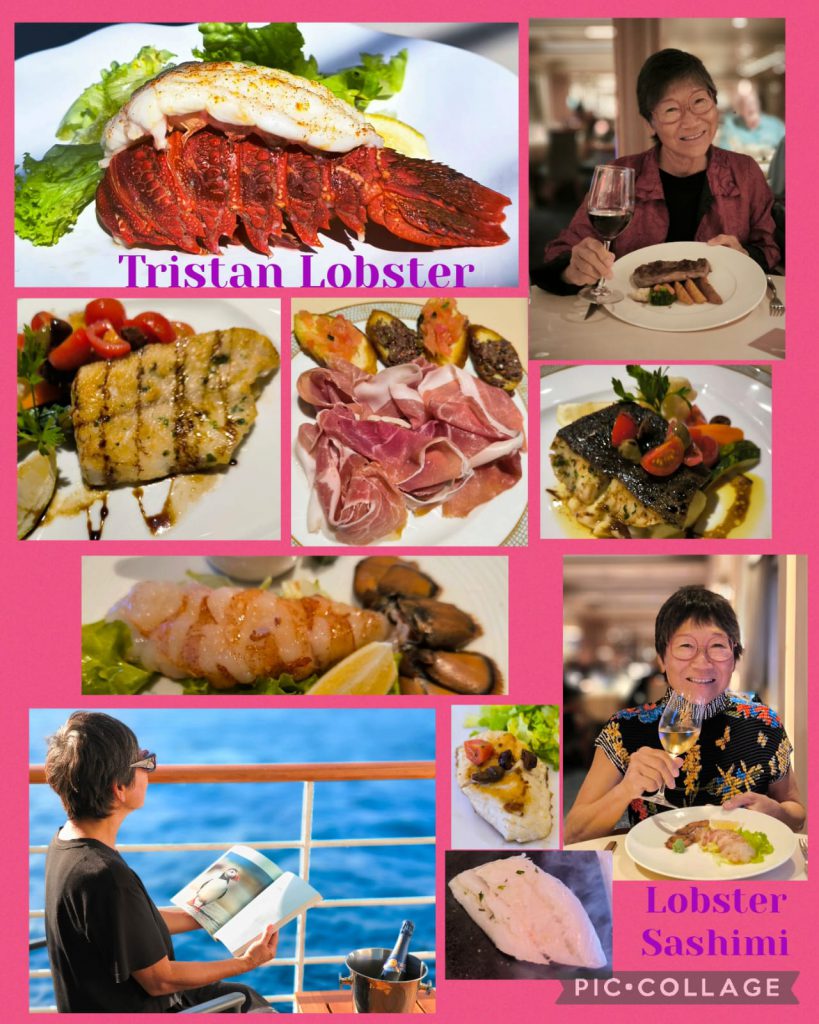March 10-12 Sailing to Tristan da Cunha Archipelago (1388NM)
The weather is the king of the sea: we sailed on in search of the calm sea and sped ahead to reach the Tristan Archipelago where fine weather would expected as per weather forecast. Nature is incredible: no one knows what is installed ahead. On March 10, we continued to encounter countless icebergs and the Captain and his crew had to sail most carefully. When the Captain realised Iceberg D28a which was split off from the Amery Ice Shelf was ahead, he steered the boat to D28a so that we could have a chance to sail along it. We got fairly close to it and watched it for over half an hour. We saw blue and jade icebergs and numerous gigantic tabular icebergs. What a treat!
The weather began to warm up as we sailed towards the Tristan Archipelago. Days at sea passed quickly as I attended all the lectures that are interesting. At 4 pm every afternoon, I would have afternoon tea savoring a scone with cream and strawberry jam followed by recap at 6:15 pm and dinner at 7 pm. When we approached the islands, we began to spot the three beautiful species of albatrosses of the area, namely yellow-nosed, sooty and Tristan albatrosses. There are plenty of shearwaters, terns and petrels
March 13 Gough Island by Zodiac
I was excited to see sunrise at Gough Island, one of the least disrupted ecosystems left on this planet. The vertical ramparts of the sea cliffs of the island provide important habitat for almost the entire global populations of the Tristan Albatross and the Atlantic Petrel. Prominent features of the island are still in my memory from my last visit in 2016. But this time, I have been able to see much more: sheer cliffs and features of the coastline, the basalt rock formation, sea caves, vegetation, numerous seals on the beach, petrels, Sooty and Yellow-nosed Albatrosses, and Northern Rockhopper Penguins. Some also spotted the endemic Gough Bunting.
March 14 Inaccessible Island by Zodiac
We arrived at the Inaccessible at sunrise. The weather looked great and we were all got ready for a zodiac cruise. Unfortunately, the swell was over 1.5m and it was difficult to operate the zodiac safely. Instead, we had a boat cruise of about 75 minutes. I must say a boat cruise is totally different from a zodiac cruise. We had so much time that we cruised twice: clock-wise and counter-clockwise. We had a pleasant day ending with cocktail on the pool deck at 6 pm for a recap and to watch sunset with thousands of shearwaters heading back to the island.
March 15 Tristan da Cunha
Tristan da Cunha first discovered at the beginning of the 16th century by Portuguese explorer Tristo da Cuhna and dominated by the 2000-m tall Queen Mary’s Peak, is the world’s remotest inhabited island with a population of 260. The 1961 volcanic eruption brought temporary disruption to the islanders who had to take refuge in the UK for over a couple of year. We were fortunate with the weather which was sunny and warm. We also managed to get ashore safely despite the swell, with the help of six experienced crew at the gangway.
I spent the whole day on the island. While a small group hiked to the top of newly formed volcano next to the settlement, I took a leisure walk with a local guide. We stopped at a few landmarks including the post office, the Anglican and Catholic churches, the hospital (but we did not have a tour), and the Hatched House Museum. At noon, I tasted a the famous Tristan Rock lobster sandwich in the Post Office/Tourist Office/Cafe building.
After lunch, I paid USD10 (pp) for a ride to the famous potato patches with Skip. The driver, who has been working in the UK and Australia, prefers to spend his retirement life on his own on the island. He showed me his potato patch which is a bit off the main road. While Skip took the ride back to the centre, I decided to take the 3-km long walk. I first walked back to the driver’s patch where his cousin was tilling in the field with his family. I watched the team of three work and was amazed to see the number of potatoes they got from a small plot. Their patch would give them enough harvest for home consumption for a year. Life on the island is simple: each family has two cows, two sheep, two cars and a potato patch where they have their holiday home. They can go out to fish and catch crawfish and spend the weekend away from the village if they want. They are happy to live on the island. I walked as slowly as a snail soaking in the atmosphere and was ready to return to the boat after 4pm. I got sight of a fishing boat in the port and was lucky to have a look of a live Tristan Rock Lobster.
March 16 Nightingale Island by Zodiac
The original plan was to have a zodiac cruise / kayak in the morning followed by a landing in the afternoon. The swell was much for kayaking. So everyone took a zodiac cruise to the Middle Island and Stoltenhof Island. We saw plenty of Northern Rockhopper Penguins swimming in clear water around the zodiac and on the rocks. The giant kelp that can grow to 40m is most impressive. The rocky shore was full of baby seals with the adults enjoying themselves in the water. The landscape especially the Stoltenhof Island is stunning. On the way back to the boat, we witnessed how a petrel took and feasted on a wounded penguin. That is a nature and survival for the fittest.
The original plan was to land on Nightingale Island in the afternoon to look for the penguins and yellow-nosed albatross. But as the landing area is now covered with seals, the expedition team considered it not safe to land. Instead we had another cruise to explore the other side of Nightingale Island. Dave was the zodiac driver and we had an excellent time exploring several sea caves with lichen and moss in bright colours.
March 17 Inaccessible Island
As we had left South Georgia one day early, the expedition team arranged a morning zodiac cruise on the northern side of Accessible Island as the swell was manageable. When I first woke out and found the island top covered in mist, I was not hopeful. Anyway, by the time we stepped into the zodiac at 9:30am, the sun had come out and the sea remained calm. We had a nice cruise exploring the further side of the northern shore of Inaccessible Island. The bay was sheltered, nice and calm. We saw plenty of seals, waterfalls, and some Northern Rockhopper Penguins from a distance. However while two zodiacs continued to go east to almost the end of the northern shore, our zodiac turned back in order to look for penguins. As a result, we missed a fantastic wildlife extravagance of albatrosses, two big male seals fighting over a female seal, terns and skuas (A passenger told me about this later that day).
The scenic zodiac cruise of Inaccessible Island drew this expedition to a happy ending. Though we would still have a day with activity in Namibia on March 22, we all felt that this expedition had ended on a high note with a grand slam in the Tristan da Cunha Archipelago. Peter Harrison, an authority on seabirds who has been travelling for over 40 years, said it was only the third time he managed to visit all three islands on a single expedition with good weather. We were indeed blessed! While having steamed Tristan Rock Lobster for lunch by the pool, we watched beautiful clouds veiling over Tristan da Cunha. It is likely to be the first as well as the last time I visit this remotest inhabited island! Goodbye, Tristan da Cunha Archipelago
March 18 – 21 Sailing to Walvis Bay (1632NM)
We had four full days at sea. The weather conditions were excellent and the sea was generally calm. Unfortunately there was not much to see (no land and few birds). The expedition team kept us busy by putting on three or four lectures a day and a bridge tour. In addition, there were other activities including team trivia, spa seminar, golf putting, quiz etc. When I reviewed the daily chronicles, I realised I had attended altogether 34 educational lectures plus a few workshops on ancient navigation. Among all the talks, I find Peter Harrison’s last talk on “Seven Years Seven Continents” which is actually about his life, passion, career and achievements, most moving and Shirley Metz’s account of her ski as the first woman to the South Pole in 1989 inspiring. I am truly lucky to meet this remarkable couple on this expedition.
March 22 Walvis Bay, Namibia
Today, we landed in Walvis Bay, Namibia. I got up early to watch a beautiful sunrise over breakfast. After docking at a pier, we disembarked and had to go the Namibia Immigration Office. I disembarked about 10 am and did not get a stamp on my passport till 11 am. Very inefficient! I joined a group to take a harbour cruise followed by kayaking. I had a wonderful morning on the boat watching the performance of a seal that leaped onto the boat to get fed. We were excited to find two the strange looking sunfish swimming close to the boat. There were numerous seals popping out of the water.
After an hour’s cruise, we went ashore and were treated with champagne and a light lunch. I had not kayaked for years and dared not partner with Teresa who had never kayaked before. So she went off with another guest who is experienced while I took a solo kayak. There was no current and I managed to kayak with ease after a while. There were countless seals swimming around and on the beach. Unfortunately we could only kayak for about 40 minutes. We then had a ride along a long seashore lined with Greater and Lesser Flamingos, terns and many other birds. Finally we mounted a dune offering panoramic views of salt pans and a salt plant. We were back on the boat around 2:30pm.
Teresa and I felt tired and spent the rest of the afternoon getting ready for disembarkation the following day. I got all dirty clothes washed. We had briefing by Claudia and the expedition team at 4:45pm and a farewell reception at 6:30pm. We watched a memorable video of the expedition.


